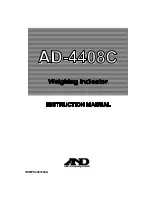
GUI reference
R&S
®
ZNB/ZNBT
421
User Manual 1173.9163.02 ─ 62
Selectivity
Selects the shape of the IF filter:
●
Filters with "Normal" selectivity provide the shortest settling time (recommended for
fast measurements).
●
"Medium" selectivity filters have steeper edges but require longer settling times.
●
"High" selectivity filters have the steepest edges and the longest settling times.
This filter type is suitable for isolating adjacent signals which are separated by a
small frequency spacing.
Remote command:
[SENSe<Ch>:]BANDwidth[:RESolution]:SELect
[SENSe<Ch>:]BWIDth[:RESolution]:SELect
5.9.3
Average tab
Defines the number of consecutive sweeps to be averaged and enables/disables the
sweep average.
Effects of sweep averaging, alternative settings
An average over several sweeps reduces the influence of random effects in the mea-
surement and therefore minimizes the noise level. The effect increases with the aver-
age factor, however, obtaining an averaged result requires several sweeps and there-
fore increases the measurement time.
Smoothing is an alternative method of compensating for random effects on the trace by
averaging adjacent measurement points. Compared to the sweep average, smoothing
does not significantly increase the measurement time but can eliminate narrow peaks
and thus produce misleading results.
The sweep average is not frequency selective. To eliminate a spurious signal near the
measurement frequency, alternative techniques (e.g. a smaller filter bandwidth) must
be used.
The average factor is also valid for calibration sweeps. The calculation of system cor-
rection data is based on the averaged trace.
Power Bw Avg softtool
















































